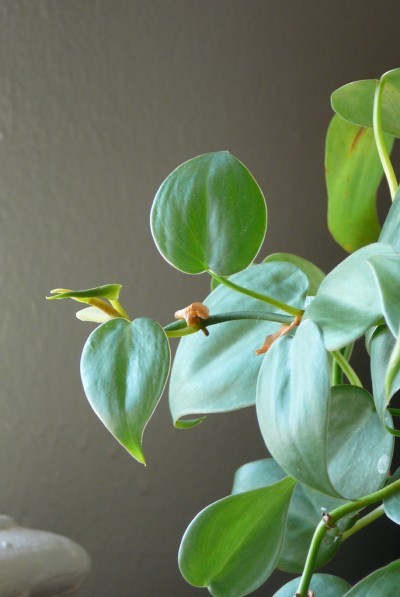






For generations, philodendrons have served as a mainstay in interior gardens. Philodendron care is easy because if you watch for the signals, the plant will tell you exactly what it needs. Even inexperienced houseplant owners will have no trouble growing philodendron plants because they adapt readily to the conditions inside the home. This makes learning how to care for a philodendron incredibly simple.
Philodendron houseplants thrive indoors year round without complaint, but they enjoy an occasional stay outdoors in a shady spot when the weather permits. Taking the plant outdoors also gives you a chance to flush the soil with plenty of fresh water and clean the leaves. Unlike most houseplants, philodendrons don’t experience as much stress when moving from indoor to outdoor settings.
Philodendron care incorporates three basic needs: sunlight, water and fertilizer.
Sunlight – Set the plant in a location with bright, indirect sunlight. Find a position near a window where the sun’s rays never actually touch the foliage. While it’s normal for older leaves to yellow, if this happens to several leaves at the same time, the plant may be getting too much light. On the other hand, if the stems are long and leggy with several inches between leaves, the plant probably isn’t getting enough light.
Water – When growing philodendron plants, allow the top inch of soil to dry out between waterings. The length of your index finger to the first knuckle is about an inch, so inserting your finger into the soil is a good way to check the moisture level. Droopy leaves can mean that the plant is getting too much or not enough water. But the leaves recover quickly when you correct the watering schedule.
Fertilizer – Feed philodendron houseplants with a balanced liquid foliage houseplant fertilizer that contains macro-nutrients. Water the plant with the fertilizer monthly in spring and summer and every six to eight weeks in fall and winter. Slow growth and small leaf size is the plant’s way of telling you that it isn’t getting enough fertilizer. Pale new leaves usually indicate that the plant isn’t getting enough calcium and magnesium, which are essential micro-nutrients for philodendrons.
The two main types of philodendron houseplants are vining and non-climbing varieties.
Philodendron houseplants are often confused with pothos plants. While the leaves of these two plants are similar in shape, pothos plants are usually variegated with splotches of yellow or white color. Pothos is a much smaller plant as well and is often sold in hanging baskets.
Copyright © www.100flowers.win Botanic Garden All Rights Reserved